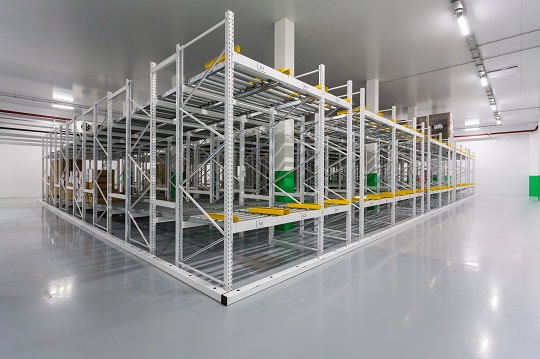Stocktaking, also called stock counting, is a common task in the supply chain. It is done to make sure that the inventory you store matches what is in your system. Keeping track of inventory can take a long time, maybe even a whole day, if you have a lot of it.
A large amount of inventory will not only take longer to count, but it will also need more people to do it. And that means the costs are also higher, especially if it’s done over the holidays and your team has to work overtime, which you have to pay for.
If you do stocktaking on regular work days, it will be a different story. You have to stop what you’re doing for a little while. And the longer it takes to count your items, the longer it will take for your business to stop running. Which means you’ll have more downtime or waste time while you’re working.
When you have so much stock in your warehouse, it makes it even harder to get accurate results when you count your inventory. Even more so if there are too many goods and you have to store yours in a place where other goods can’t get to them. Counting the stock will take even longer because you have to move the things that are in the way so you can count the things that are blocked behind them.
Now, try to picture the opposite happening. You don’t have any stock when you take stock. Zero inventory. Then it will be much faster to count goods, since there won’t be anything to count, right?
Is it possible?
Of course. Providing you know how.
In this post, we’ll talk about that.
But before we talk more about it, make sure you’ve also joined the scmguide telegram channel so you don’t miss the latest blog posts and can learn more about supply chain management in general.
Table of Contents
Is it possible to have nothing in stock when stocktaking?
Now, let’s look at how to set zero inventory when stocktaking.
Choose and sort things by type
You should know that not all items can be out of stock when you do stocktaking. Only things that meet a set of rules can.
From what I’ve seen, you can only have zero inventory of materials from local suppliers who always do a good job with quality and delivery. No late deliveries or bad work. Materials that are close by can be made quickly. So, you also don’t need to keep a lot of this material on hand as a safety stock.

Once you know what materials fit into that category, you have to set up when the supplier sent the last goods before the stocktaking date and when they have to start sending goods back after the stocktaking. Find out the last possible time.
Figure out how much you’ll need until the stock-taking date and send only that much to your supplier in a purchase order. Because of this, it’s important to choose materials from reliable suppliers, since you’ll only have as much stock as you need before the stock-taking date.
You might also like:
- 7 Effective Ways to Get 100% Inventory Accuracy
- 6 Steps to Start Managing Your 3PL Performance Effectively
Use local suppliers
Imported materials take a long time to get, and if there is a problem, you need even more time. And that means you have to keep enough of this type of material on hand as a safety stock.
Use local suppliers if you want to keep your stock low. Look for suppliers near you who can give you the same quality of goods. Most of the time, the price will also be lower.
With materials from reliable local suppliers, it’s easier to keep track of your stock, especially before the date of your stock count, so that you have nothing left to count.
Improve supplier performance
How well your suppliers do is another thing that affects how much stock you should keep. If your supplier is still having trouble with delivery and quality, it’s your job to help them improve first.
Of course, you can’t depend on suppliers who often deliver goods late or that aren’t very good, right?
It’s important to be consistent
Keeping inventory low is not a job that can be done in a day or two. You must keep trying to meet these conditions by doing some of the things above on a regular basis. And it’s very likely that you can.
Having no stock at the time of stocktaking is a plus
As I said above, counting will go faster when you have nothing left to count. You could even say that there won’t be a counting process because there aren’t any things to count, right?
Goods can be counted more quickly, which means you have to spend less money. And if you use your working time to do stocktaking, your downtime will be shorter and you can get back to work faster.

Also, the numbers that come out of the counting process will be more accurate. Who could make a mistake when there is no stock? The data you get from the counting process is also more reliable, so you can use it to make better decisions about the supply chain.
Important point
When doing stocktaking, it’s a lot easier if there are no items in stock. But that’s not really the point.
The most important thing to remember is that you should only keep things you really need. The most important thing is to keep your stock at a healthy level. Your cash flow will be better, and you won’t have to worry about goods that are old, broken, or out of date.
Operations problems are no longer hidden because having a lot of inventory will only hide problems that are already there. For example, no matter how many problems there are on the production floor, your team can always meet customer requests on time. Why? Since you have so much to sell. So, the amount of stock you keep hides the problem on the production floor. It looks like there’s nothing wrong.
You might also like:
- Your Warehouse is Full, do You Need to Make It Bigger, or Can You Do Something Else?
- Excess Stock, is It Due to Declining Sales or Over Supply? Don’t Get the Wrong Conclusion
Conclusion
It’s fun to have nothing in stock when you do stocktaking. The process of counting is quick, and figuring out why the results are different is also quick. Time is not wasted, and you can get back to work quickly.
But not all materials can be turned into zero inventory. You should really only choose the things that meet the criteria I just listed. If you don’t, your business will have to stop.
And the main goal is not to have no stock at the time of stocktaking. That’s just the advantage you’ll get from what you have to do every day, which is to keep your stock levels low by only buying what you need. Just the right amount. So, your operational costs will stay low, and you’ll have less chance of goods getting broken or going out of date.
Hope it helps!
If you thought this article was helpful, send it to your coworkers so they can learn from it too. You can also join the scmguide telegram channel to stay up to date with this blog and learn more about supply chain management. You can use any of the articles on this blog for any reason, even for profit, without giving credit to the author.
 by
by 